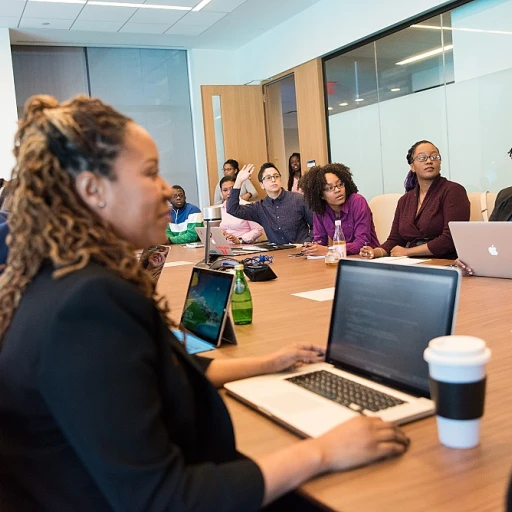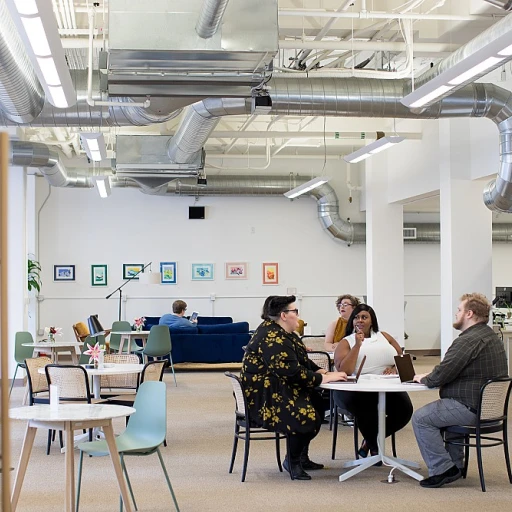
Understanding DevSecOps: A Blend of Development, Security, and Operations
Understanding the dynamic nature of DevSecOps requires appreciating its foundational blend of development, security, and operations, which collectively forge a resilient approach to software creation and management. DevSecOps promotes the early integration of security practices into the development lifecycle, a strategy known as 'shift left,' ensuring that potential vulnerabilities are addressed proactively in real time.
At its core, DevSecOps combines principles from DevOps and emphasizes collaborative processes across software development teams and security teams. This integration is not merely theoretical but is fortified through practical applications, such as continuous monitoring and automated security testing. It's this melding of development operations with stringent security measures that establishes a robust framework for application security.
The heart of DevSecOps lies in fostering secure development practices through the use of sophisticated security tools and continuous processes. As new threats emerge, compliance with security best practices becomes indispensable. Teams employing DevSecOps principles benefit from a cohesive approach that spans the entire development process, reinforcing security as a shared responsibility.
The adoption of DevSecOps requires careful implementation of devsecops principles and monitoring practices to ensure seamless incorporation of security measures. Additionally, the use of open source security tools can further bolster security testing and provide incident response capabilities. This framework supports organizations in navigating the complexities of modern software vulnerabilities.
As the development landscape continues to evolve, organizations embracing DevSecOps principles will be better equipped to adapt to technological advancements. The alignment of development, security, and operations through collaborative teamwork optimizes the software development lifecycle while reducing risks and ensuring a secure, reliable system. For a deeper insight into how these innovations impact finance, explore more about the role of deep learning innovations.
The Role of Automation in DevSecOps
The Evolution of Processes through Automation
In the digital transformation era, automation has become a cornerstone of DevSecOps, redefining how teams approach software development and security. Integrating automated processes into the development lifecycle spans a range of applications, including the creation of secure code, continuous testing, and real-time compliance. Automation tools are designed to enhance efficiency by performing repetitive tasks at scale and reducing the possibility of human error. This enables development, security, and operations teams to focus on more strategic aspects of their roles. For example, automated security testing can identify vulnerabilities early, allowing timely remediation before they pose a threat. This aligns with a shift left strategy that prioritizes security from the onset of development. Moreover, automated monitoring tools provide continuous oversight of application security, ensuring that compliance is maintained throughout the software development process. They offer real-time insights into potential security breaches and facilitate rapid incident response, vital for maintaining the integrity of digital infrastructures. By implementing these automation tools and practices, teams can uphold DevSecOps principles, enhancing their ability to deliver secure and reliable software without compromising on speed or quality. This evolution in processes is not merely a trend but a fundamental shift toward a culture where security is an integral part of development operations from start to finish. For those interested in diving deeper into how automation is applied in this context, maintaining an understanding of the latest developments in AI-driven automation can be enlightening. You can explore more on harnessing AI for conceptual adaptation in the workplace, which delves into the integration of AI with work processes, providing robust solutions in ever-evolving work environments.Collaboration Across Teams: Breaking Down Silos
Fostering Team Collaboration and Breaking Down Silos
DevSecOps is much more than a mere amalgamation of development, security, and operations principles into a cohesive strategy. It fundamentally restructures team interactions by promoting collaboration and tearing down traditional work silos that previously existed between different teams. When development, operations, and security are integrated, it nurtures a shared responsibility culture and aligns them towards common objectives. The essence of collaborative work in the DevSecOps framework can be found in the cooperative development process. This requires synchronizing the efforts of development teams, security teams, and operations teams. By encouraging constant communication and shared responsibilities, potential software vulnerabilities are addressed in real time, enhancing security measures and minimizing risks. Furthermore, security practices are seamlessly integrated into the continuous development lifecycle. This shift left approach urges teams to identify and mitigate security vulnerabilities during the early stages of software and application development. Tools like security testing, automated security processes, and continuous monitoring play a significant role in supporting this methodology. The application of open-source security tools within DevSecOps practices can significantly facilitate seamless collaboration. By leveraging security tools that allow visibility and real-time feedback, DevSecOps practices can enhance compliance monitoring and provide a robust incident response strategy. This enhances the security of code and fosters a secure development environment. Collaborative platforms and processes, fortified by the principles of DevSecOps, lay the foundation for an agile, adaptable, and security-focused approach. A culture of integration and continuous improvement encourages teams to transform software development and operations, ensuring the success of development operations in increasingly complex environments.Security as a Shared Responsibility
Fostering a Culture of Security from the Ground Up
In the constantly evolving landscape of software development, integrating security into all levels of work is paramount. Security is not solely the realm of dedicated security teams anymore. Rather, it has become a shared responsibility that all members of development operations must embrace. This cultural shift represents a move away from traditional methods where security was an afterthought, moving security measures to the forefront of the development lifecycle. Seeing this fundamental shift, software development teams need to instill security principles from the very beginning of the process. By adopting such an approach, security becomes a natural extension of the development process, eliminating vulnerabilities earlier rather than later. This shift left strategy involves merging application security with initial development processes, testing codes right from the start with security practices and understanding compliance requirements that might affect the final product. Implementing Automated Security Solutions Automation plays a critical role in integrating security into daily operations. Automated security tools, tailored to fit within devsecops principles, empower teams to carry out security testing seamlessly alongside their development tasks. By doing so, teams achieve real time monitoring, ensuring continuous compliance and guarding against potential security risks. Integrating open source tools in this context also encourages more transparent and versatile security solutions. Continuous Monitoring and Incident Response Adopting a continuous monitoring strategy is another critical practice. By continuously observing systems, teams can quickly identify and respond to incidents as they arise, minimizing risks and maintaining a secure environment. This groundwork of security practices leads to a more efficient incident response process, where any anomalies can be swiftly addressed, safeguarding both development processes and final software applications. In conclusion, only by embracing a culture where security is integrally woven into the fabric of devsecops can organizations hope to build solid foundations for future work environments. This requires dedication to continuous education on security best practices, robust implementation of security tools, and the foresight to adapt to ever-changing technological landscapes.Adapting to Rapid Technological Changes
Staying Current with Technology in DevSecOps Environments
As the landscape of development evolves, staying ahead of technological advancements is crucial for success in DevSecOps environments. The fusion of development, security, and operations requires teams to adapt swiftly and integrate the latest tools and techniques into their processes. This dynamic integration is essential in maintaining effective, secure software development.
To navigate these rapid technological changes, several practices can be embraced:
- Adopt Continuous Learning: Encourage teams to engage in continuous learning, keeping up with the latest security tools, DevOps advancements, and best practices. Provide training and access to resources that foster growth and knowledge sharing.
- Implement Agile Security Measures: Integrate agile security practices that allow teams to respond quickly to threats and vulnerabilities. This could involve ongoing security testing, continuous monitoring, and automated security processes to ensure real-time incident response.
- Embrace Open Source Technologies: Leverage the benefits of open source software to stay current with development innovations. Open source tools can enhance adaptability and foster collaboration across teams, providing diverse solutions for evolving security challenges.
- Encourage Collaboration and Communication: Foster an environment where development, operations, and security teams collaborate closely. This breaks down the silos, as noted earlier, and ensures that security principles are embedded throughout the development lifecycle, from code development to deployment.
- Utilize DevSecOps Principles: By maintaining a clear adherence to DevSecOps principles, teams can ensure that security remains a shared responsibility, integrating security measures throughout the entire development operations process.
Staying at the forefront of technology is not just about adopting new tools; it's about creating a process that allows for continuous improvement and agility. As technology evolves, so too must the frameworks and principles that guide DevSecOps. By doing so, teams can ensure resilience and compliance in the face of ongoing change.












